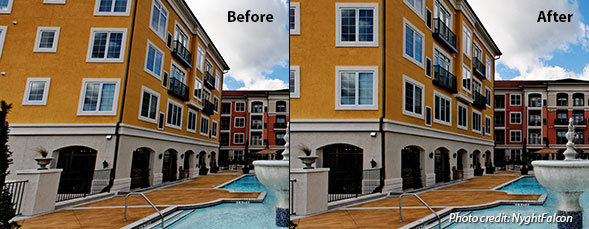

- DXO VIEWPOINT VERSION DIFFERENCES HOW TO
- DXO VIEWPOINT VERSION DIFFERENCES UPGRADE
- DXO VIEWPOINT VERSION DIFFERENCES SOFTWARE
I definitely like to have the choice, and knowing that it is possible I will certainly play with that slider a lot in upcoming conversions. The standard value of 0 gives a little more sharpness, but for the cost of more noise in the uniform background than I could see in the image that was developed by PL5 with DeepPrime. When I choose to eliminate all the noise (-100 on the slider), the background turns out very smooth, while not giving up that much fine sharpness. I tested it on a macro image with a background that should be mostly uniform, so any difference in noise will be very visible there. Only this version benefits from parametric processing without. The thing distinguishing DeepPrime XD from DeepPrime (or rather: PL6 from PL5, because in PL6 the slider is there for both DeepPrime and DeepPrime XD) is the addition of a slider ("Rauschmodell", translates to "noise model") to decide how much noise you are willing to exchange for more sharpness. In the ViewPoint version integrated in DxO PhotoLab, the tools are available via two palettes. Here are some samples, utilizing both DeepPrime XD at "magic wand" default levels and the Wide Gamut (K-3 at ISOs 5000, 4000, 2000, and 500, respectively, all processed to taste you can view full-res JPEGs on my SmugMug website by clicking on the samples):
DXO VIEWPOINT VERSION DIFFERENCES UPGRADE
I will upgrade from PL5 as soon as my budget allows, although I'm hoping to get a slightly better deal when my trial expires or in the Black Friday sales. I did notice that with some images I will have to use the "Protect saturated colours" slider a bit more to avoid colour clipping, but the results still look better than before. Encouraged by SmugMug's recent announcement that they now retain wider colour spaces of uploaded images, I also gave the DxO Wide Gamut a try, which indeed leads to richer, more natural-looking colours on my BenQ SW2700 when I switch it to AdobeRGB. Played around fairly extensively with the trial version of PL6 and came away quite impressed with the DeepPrime XD noise reduction, which is significantly more effective in removing noise than the regular DeepPrime and also better at retaining meaningful detail. DxO ViewPoint 4 is a terrific tool for architecture and interiors, but for many images it simply improves on tools you may have already. What are your thoughts, will you upgrade or even get it new (209€ for the PL6 Elite version is steep though!)? ViewPoint 4 seems even less enticing when you already have version 3. "Expanded working colour gamut for increased accuracy" and Soft Proofing - don't think I would benefit from that in a significant way. The ReTouch Tool looks nice, but I can achieve what I want within FastStone I will probably have a look at the test version though. I don't think I need more or better than what DeepPrime already offers. So if that stays true for the next major version, I will probably upgrade then. I currently have PL5 Elite and could upgrade for 99€. What is the difference between the demo (free trial) version and the paid version of DxO.
DXO VIEWPOINT VERSION DIFFERENCES SOFTWARE
See DxO PhotoLab 6: The most advanced RAW photo editing software and Why upgrade? - Compare your version - DxO to compare what the newest version has that yours has not.
DXO VIEWPOINT VERSION DIFFERENCES HOW TO
Please contact us on how to receive a full report.Just launched. Full performance evaluations are available upon request. The following section gathers key elements of DXOMARK’s exhaustive tests and analyses. More details on smartphone camera scores are available here. For more information about the DXOMARK Camera protocol, click here. Photo, Zoom, and Video quality are scored separately and then combined into an Overall score for comparison among the cameras in different devices. Testing a smartphone involves a team of engineers and technicians for about a week. The scores rely on objective tests for which the results are calculated directly by measurement software on our laboratory setups, and on perceptual tests in which a sophisticated set of metrics allow a panel of image experts to compare aspects of image quality that require human judgment.

Test summaryĪbout DXOMARK Camera tests: DXOMARK’s Camera evaluations take place in laboratories and in real-world situations using a wide variety of subjects. Average and maximum scores for each price segment are computed based on the DXOMARK database of devices tested. Average and maximum scores of the price segment are also indicated. This graph compares DXOMARK photo, zoom and video scores between the tested device and references.


 0 kommentar(er)
0 kommentar(er)
